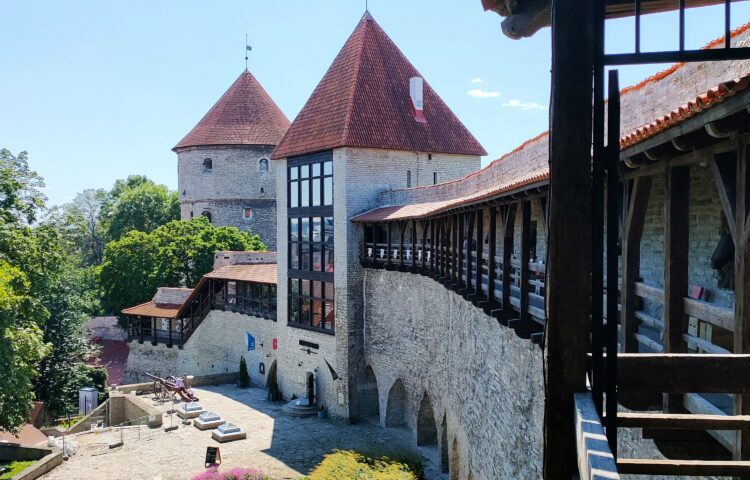Estonia is one of the northest countries in the European Union and of the last ones to be admitted. In the most recent years, it has experienced great growth and attracted a lot of young people from other regions that have felt for their economic policies and lack of complex burocracy. Either if you are a digital nomad working from Estonia or if you are planning a trip to the country, there is plenty of what to do in Estonia to discover their heritage and their new and traditional ways of living.
We spent two weeks in the Baltics visiting Estonia, Latvia and Lithuania with a side visit to the city Helsinki. We combined moving by bus between the main cities with renting a car, either for one or several days at a time. Some of the recommended visits you will find in this publication cannot be done without a car. If you rent one, you can use it to move freely in the three countries.
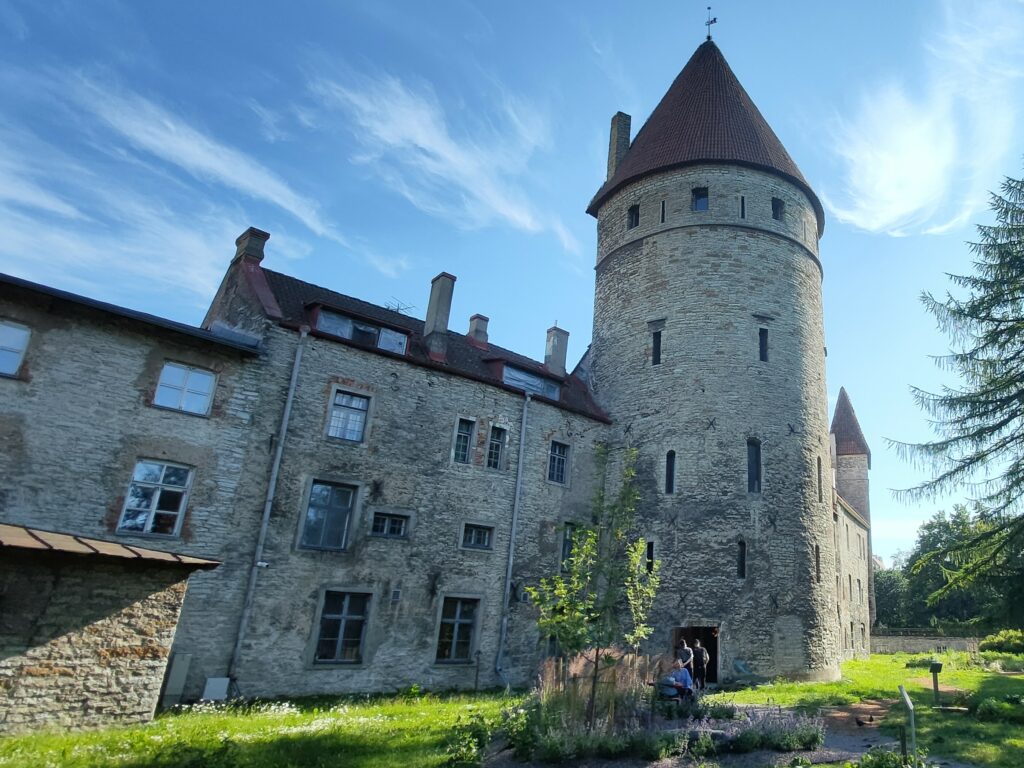
In this post, you will find a very thorough list of visits in the main cities and natural areas, including all the places we assessed and the ones we did visit. Also, if you want some additional help on how to organise your trip besides what to do in Estonia, do check my other post ‘Baltic countries roadtrip: two-weeks itinerary to the capitals and nature‘. There you will find a brief explanation on what you will encounter, ways to organise your trip or how to move around.
You can also check my posts about what to do in Latvia and Lithuania:
Contents
What to do in Estonia
Tallinn
Tallinn is the capital of the country and the most populated city, with almost half a million people living there. It is also the main governmental, financial and industrial centre of Estonia. The city was founded in 1248 and for many years it was one of the most important northern ports of the Hanseatic League. During the years, it had several rulers, including the Danish, Germans or the Russian Empire.
The most famous and emblematic part of Tallinn is its Old Town, which is exquisitely preserved. It is also a reflection of the several rulers that the city and the country had. Tallinn’s Old Town was included in UNESCO World Heritage Site in 1997.
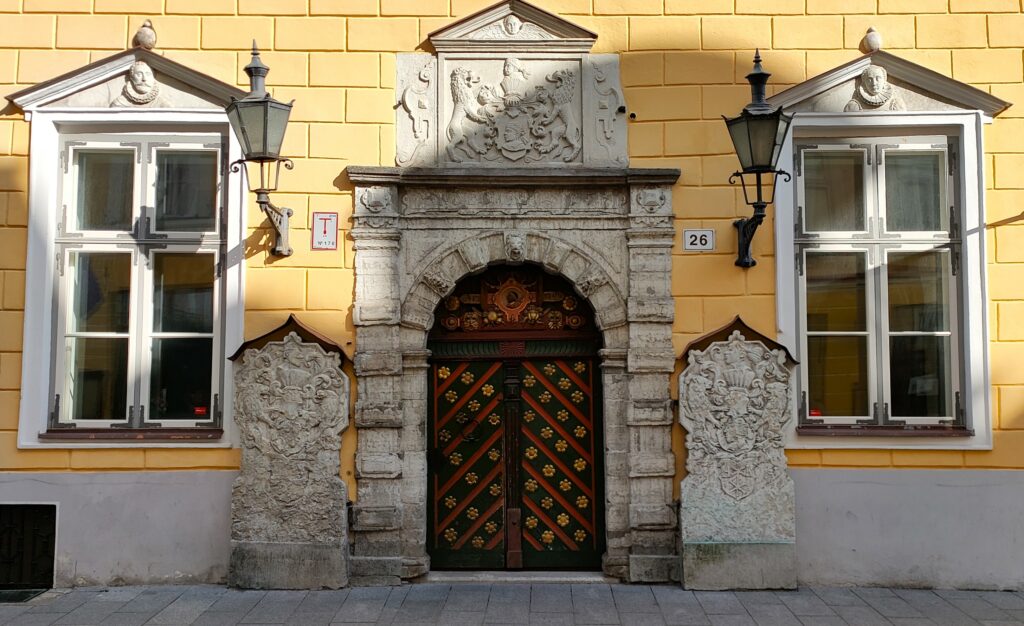
To get the most of your visit to Tallinn, I would recommend to to join a free walking tour. This will allow you not only to walk through the Old Town and its main cultural and historical sites, but also to get to know the history of the country and the city. You will also get great recommendations on what to do in Estonia and Tallinn besides the tour. For example, other neighbourhoods to visit or where to eat or party.
I am not particularly fond of visiting cities. I tend to prefer nature and climbing mountains. However, I trully enjoyed visiting Tallinn and would love to return and just spend some days wandering in the city.
Buildings and constructions
- Toompea Castle, which is currently home of the Parliament of Estonia and can be visited.
- Pikk Hermann: it is a tower of the Toompea Castle. It has always had the flag of the government ruling the country of Estonia. The flag is raised every day and the national anthem is played at the time of sunrise and lowered at the time of sunset. They currently take great pride in having the Estonian flag there.
- Kiek in de Kök: it is the most emblematic of the towers of the defensive wall in Tallinn’s Old Town and it features a six-storey museum with varied expositions, such as torture instruments, circus elements, weapons, coffee cups or whiskey glasses. The entry ticket allows you to visit some other towers of the wall. One of them is a café. It also includes the Bastion Tunnels.
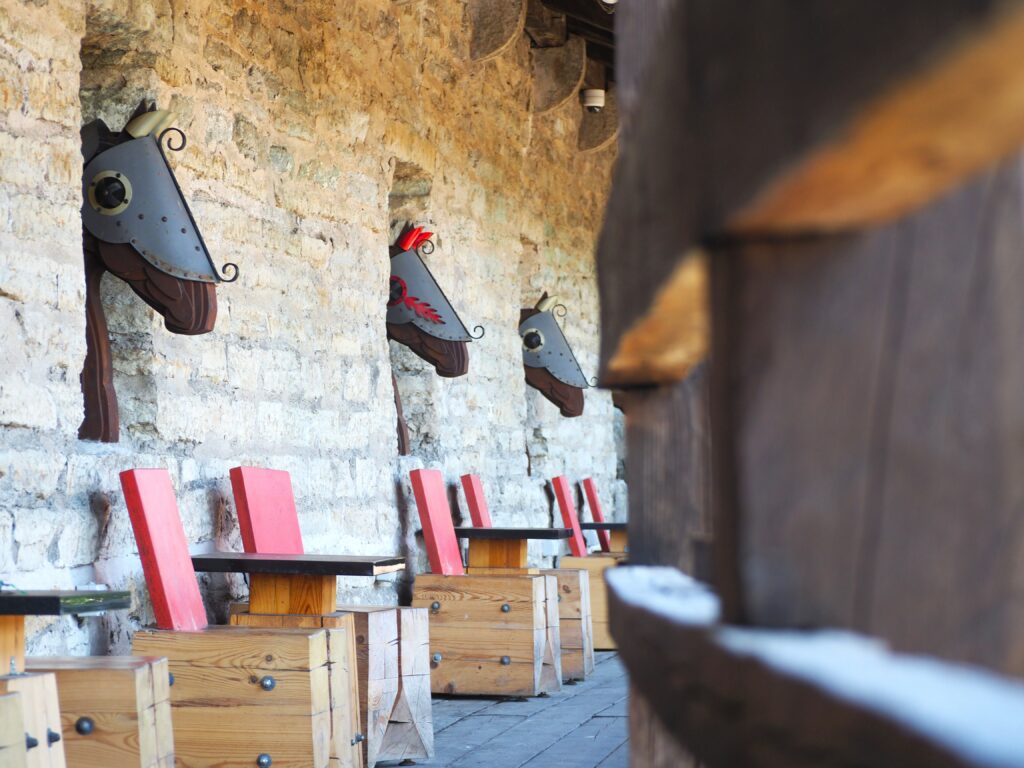
- Bastion Tunnels: they were built in 1670 as a defense to the city and since then have had plenty of uses. Storage for gas and bombs during WWII, storage for comunist propaganda during USSR, refuge to the punks in the 80s, home to homeless people and currently, tourist attraction. The tunnels are 500m long with 1,5m width (2,5m in the galleries). They are cold and really cool.
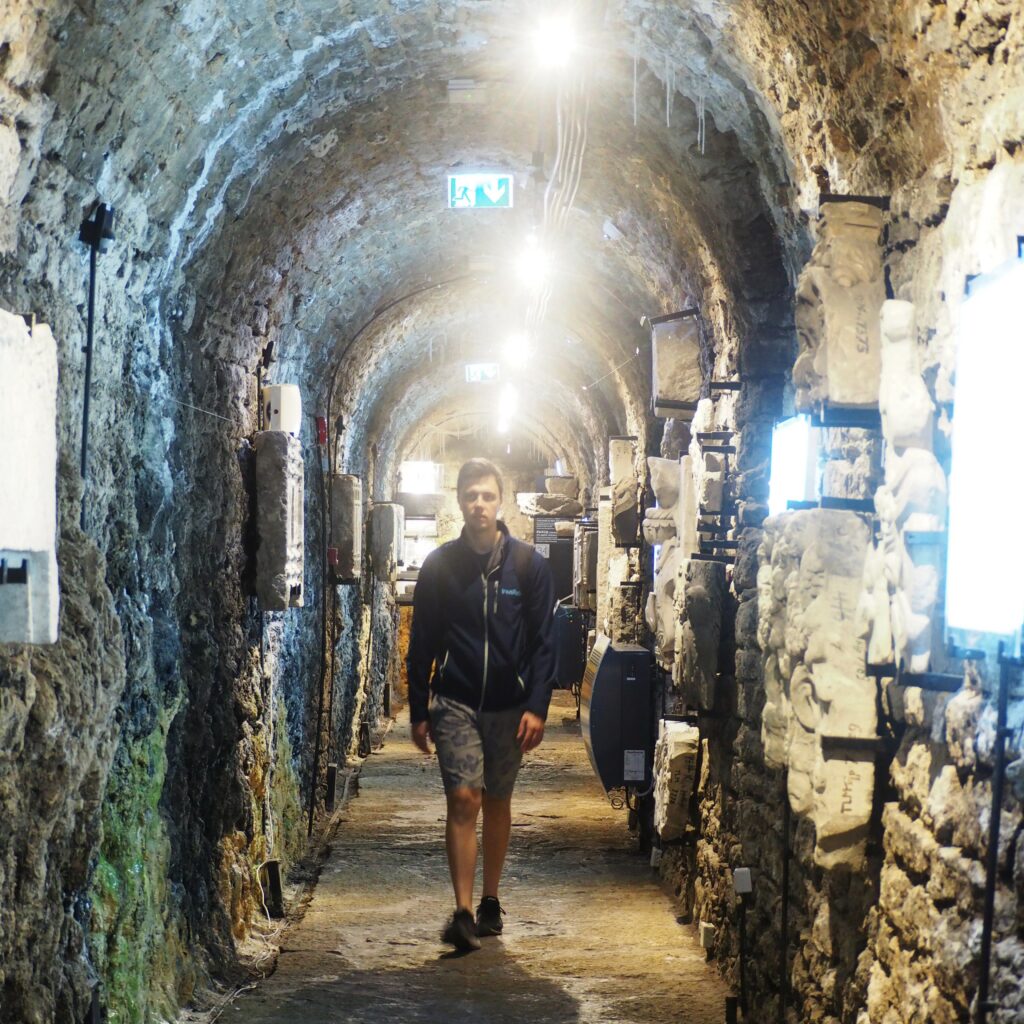
- Danish King’s Garden and the statues of the three monks. Ambrosius the “Waiting Monk”, Bartholomeus the “Praying Monk” and Claudius, the “Observing Monk”.
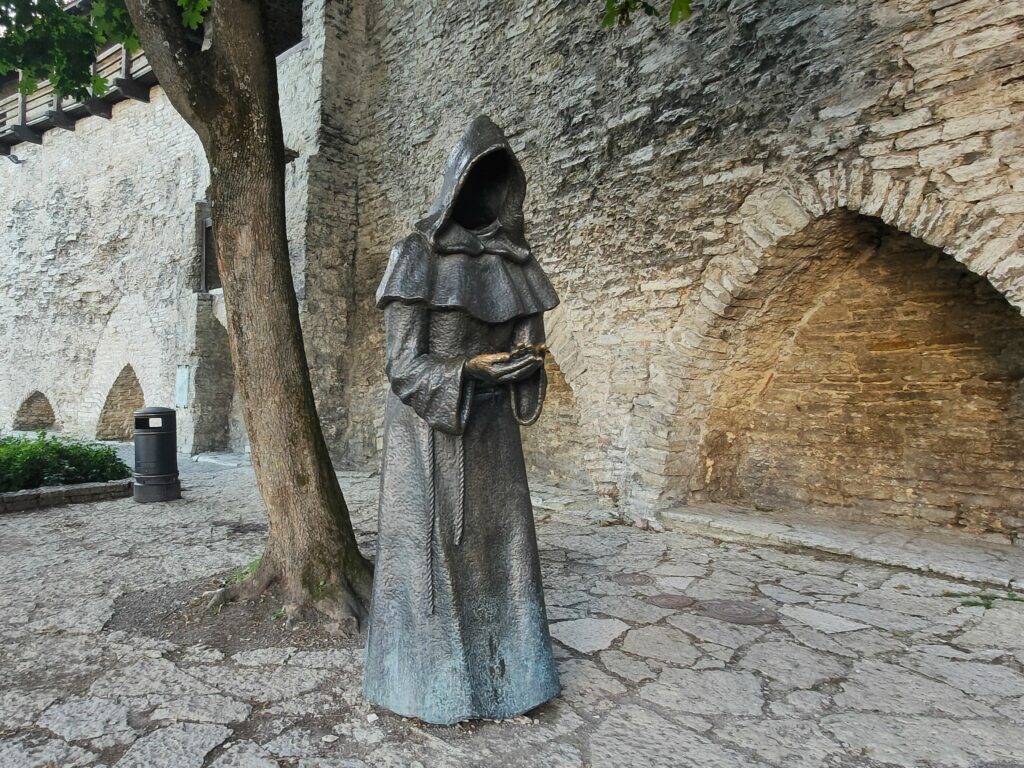
Churches
- Alexander Nevsky Cathedral: orthodox cathedral, built by the Russian Empire.
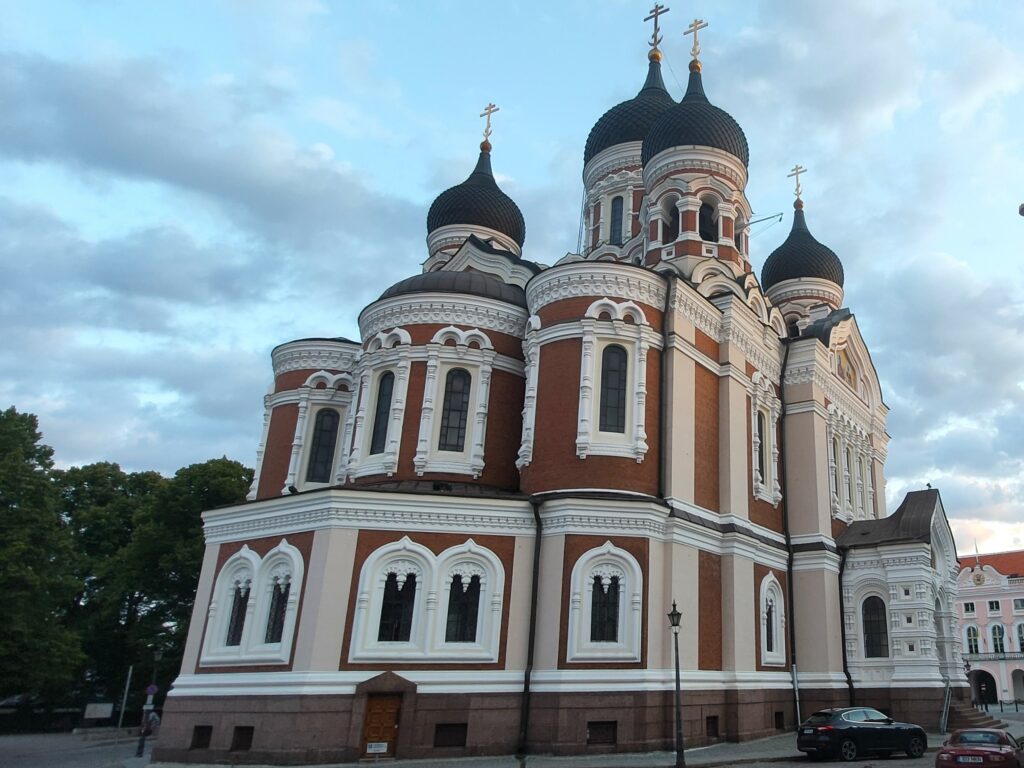
- Saint Olaf’s Church: its main attraction is its tower, which is the tallest in the city and therefore has great views over the Old Town.
- Toomkirik or Saint Mary’s Cathedral.
Other attractions
- Freedom Square and the monument to the War of Independence: it is a great cross covered in glass with kind of a lame design. The monument was inaugurated in 2009 and costed 2 million euros. However, due to the high contrast in temperature between summer and winter, the glass in the cross is always cracked and they have to replace it every other year. This maintenance averages 600 thousand euros each time.
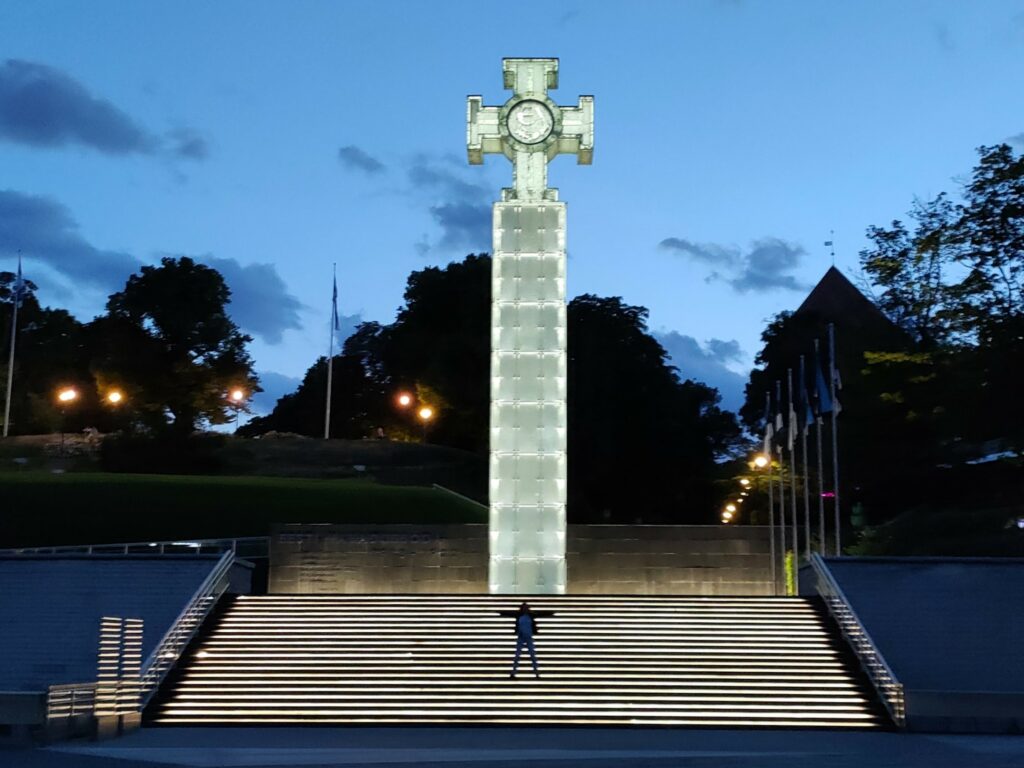
- Raekoja plats or Town Hall Square.
- Café Maiasmokk: oldest café in all Tallinn.
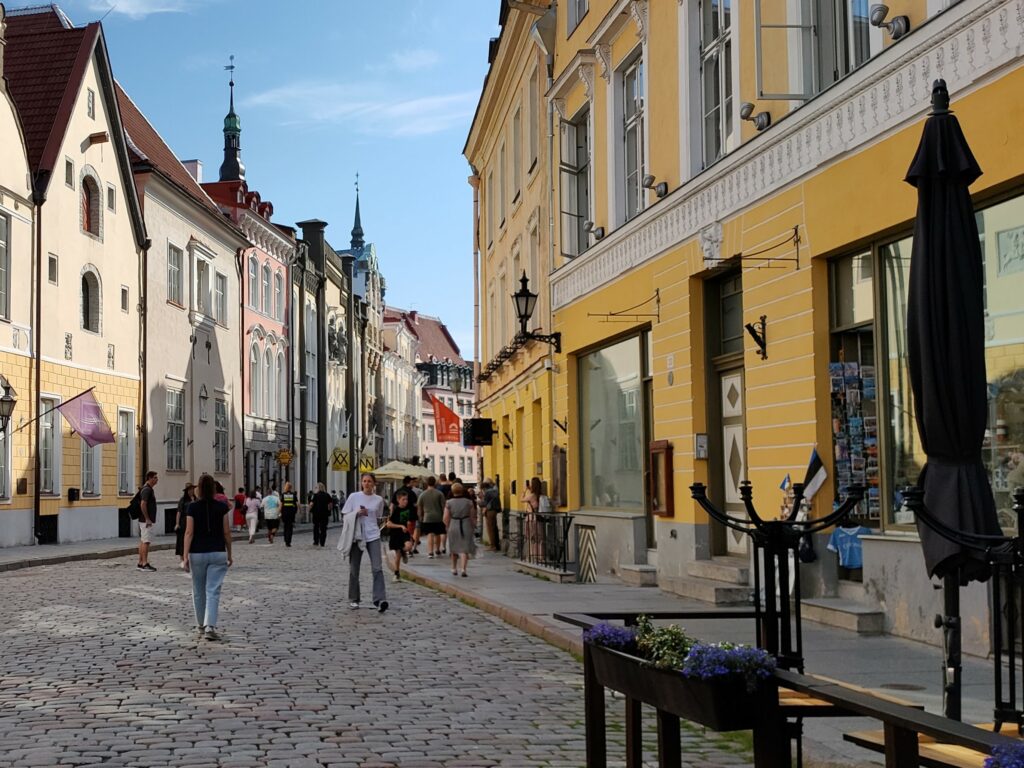
- Old Town Hall Pharmacy: drugstore with centuries of history, it is definitely worth entering and admiring the building as well as the pharmacy old instruments.
- Kohtuotsa viewing platform: for sunsets.
- Patkuli viewing platform: for sunsets.
Outside the Old Town
- Neighbourhood of Telliskivi: this is outside the Old Town. It is a former industrial area which was abandoned a while ago and has been transformed into an entertainment area, mainly for hipsters and tourists. It has plenty of restaurants, stores and art expositions, particularly around Telliskivi Creative City. In that spot you can also find a great number of huge murals of urban art. Turg Market, also located in this neighbourhood, is a three-storey building with antiquities, watchs, toys, fruit, restaurants, clothes… And a great place to get your souvenirs. Just outside the Turg Market, you will also find an old train converted into a restaurant.
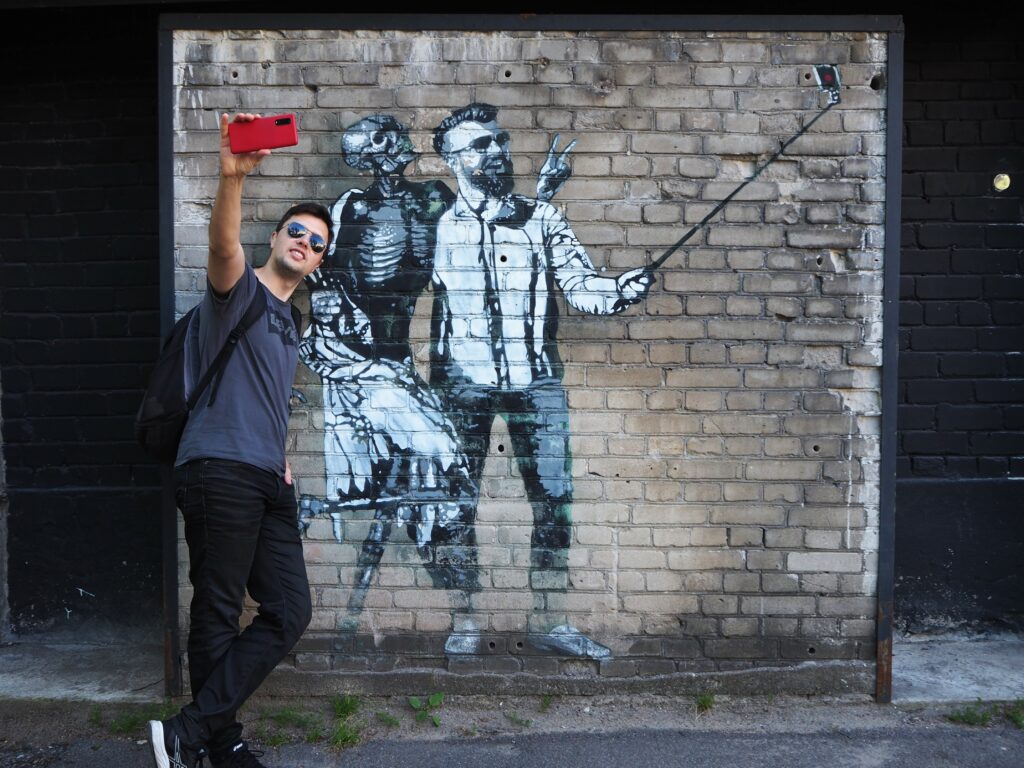
- Kadriorg Park: built around the Kadriorg Palace, a royal palace in the 18th century and currently Art Museum of Estonia. The gardens are impressive and huge, and have a collection of thousands of roses or a Japanesse Garden. In comparison with the city, the temperature is mild so it is a very pleasant walk.
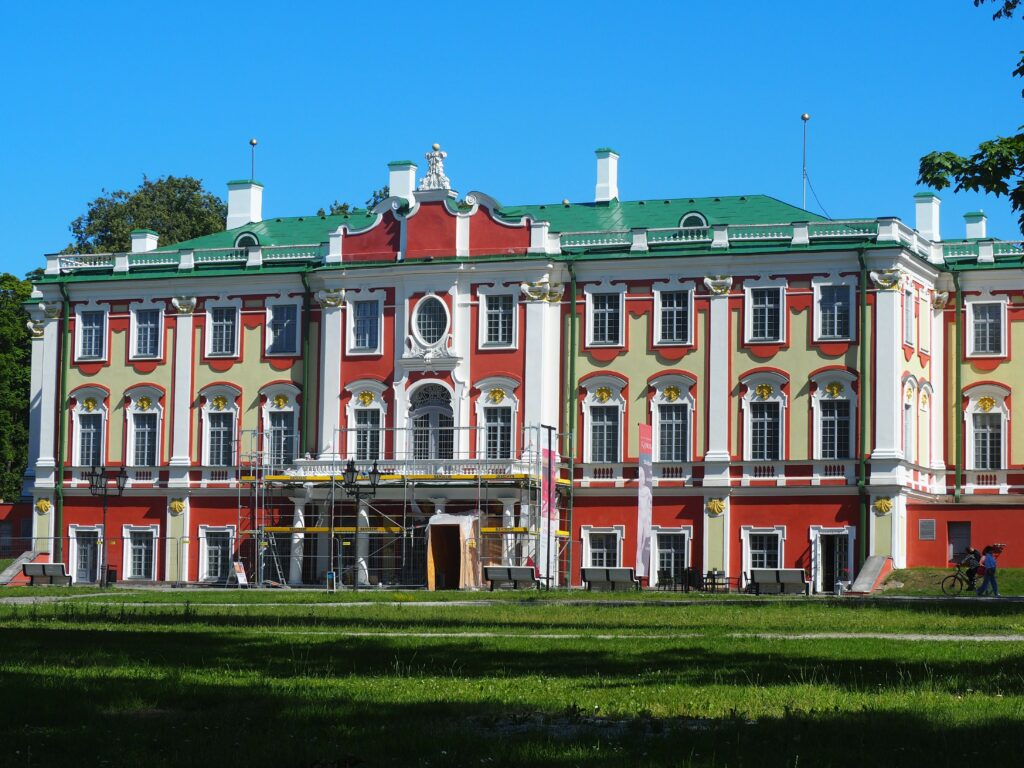
Tartu
Second city in size of Estonia after its capital, with a little over 100,000 inhabitants. The city Tartu is considered to be the cultural capital of Estonia and in 2024 it is also the European Capital of Culture. It also has the first University of the country, founded in 1632 by the Swedes. They take a lot of pride in this. And speaking of firsts, it was also the first city founded in the Baltics.
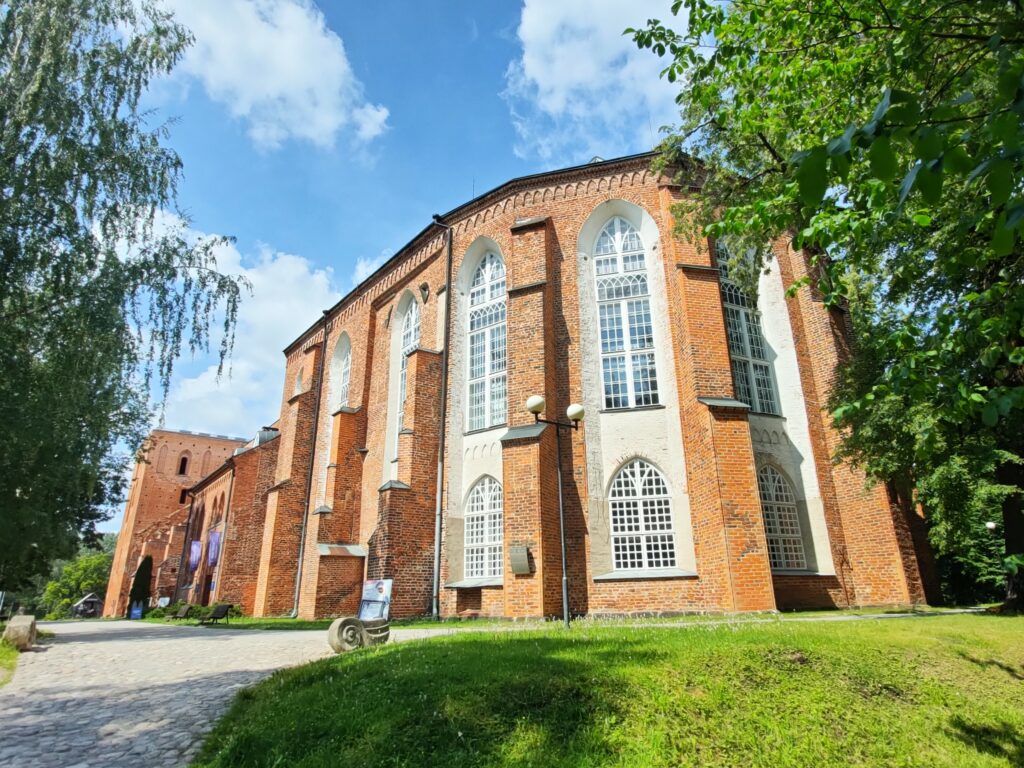
As in Tallinn, my recommendation to visit Tartu is undoubtedly to take a free walking tour. They provide a lot of value by explaining the history of the country and the city and by guiding you through the most emblematic places of Tartu.
Buildings and constructions
- University of Tartu: an impressive white building. We were told that in 1900, the books were so expensive that hardly anyone (neither students nor professors) could afford them. But even the libraries could hardly afford them, therefore, they rented them just for one class. The penalty for not returning the book in time was being sent to the university prison (yes, apparently that was a thing). And moreover, against all good criteria, the library was placed on the top of Toomemäe Hill. The five minutes climb to the library, that students and professors had to take five times per day (one for each class), was named Slow Death.
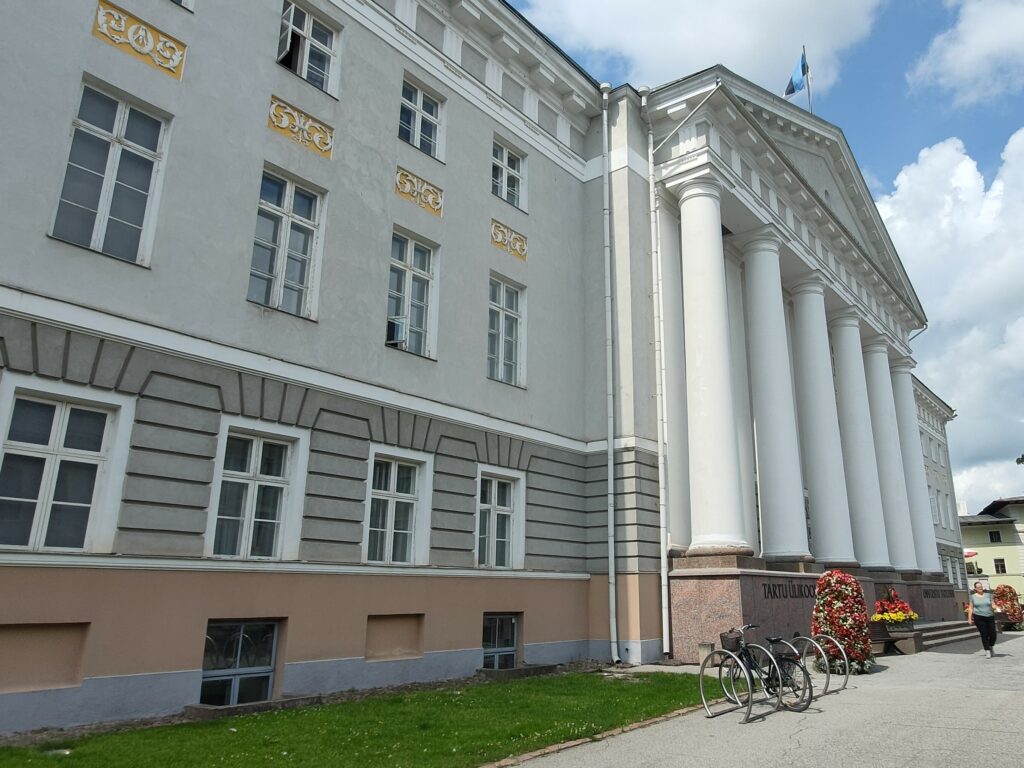
- Town Hall Square.
- Town Hall: one of the most beautiful buildings in the city.
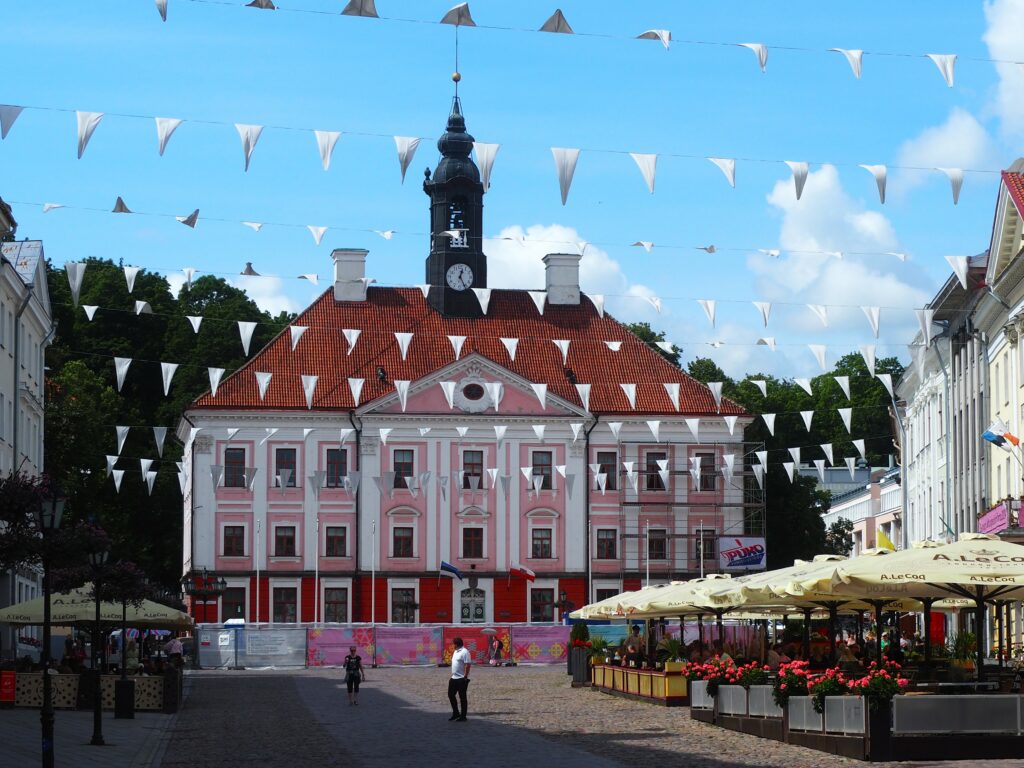
- Arch Bridge (Kaarsild): currently a pretty normal bridge, before WWII it was a spectacular present from the Russian Empire to the city in 1700-1800. All the area, including Kaarsild Park, was what suffered the most bombings during WWII.
- Angel’s Bridge: it can bring you good luck if you cross it without breathing or with your eyes closed.
- Demon’s Bridge: visible from Angel’s Bridge, it receives this name because it was built by the russians.
Churches
- Saint John’s church: as a curiosity, the interior and exterior of the church is filled with terracota heads decorating the walls. It is not known why they were put there although several theories are available. Some believe that they are the heads of the donnors of a crowdfounding campaign to build the church, although most of them wear crowns and it is hard to believe that a crowdfounding campaign amongst the European royalty would not be registered anywhere. Others say that they are from buddhist influence. The most accepted theory is that they are biblical characters, however, the fact that most of them look asian just adds to the confusion.
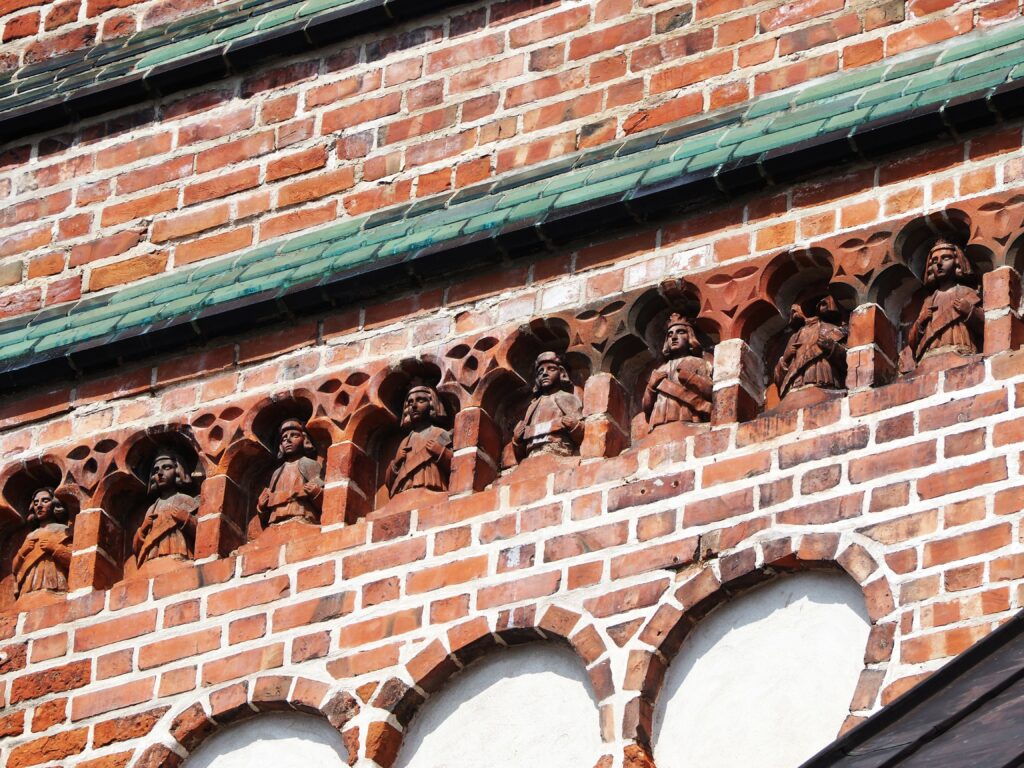
- Cathedral of Tartu: now in runes but trully spectacular.
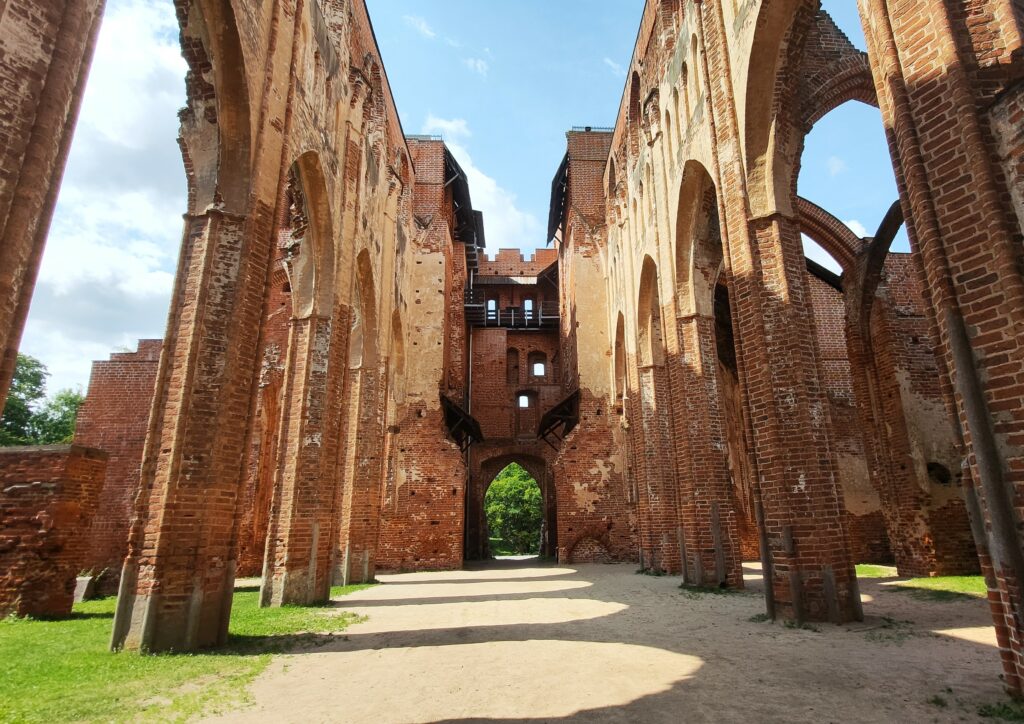
Statues
- Kissing Students Statue and Fountain: located in Town Hall Square, it is going to be a DJ booth for the Tartu’s Culture Capital 2024.
- Statue of Kristian Jack Peterson: university student. He was so proud of being Estonian that attended classes with the typical estonian dressing.
- Statue of Karl Ernst von Baeri: another university student. He is famous for despising Tartu’s University, to the point that he currently still is thrown wine or beer from current students.
- Statue of Oscar Wilde and Eduard Vilde: besides the surname and time, it is hard to believe that these two writers shared anything. However, it was enough for the city of Tartu (where Eduard Vilde was born) to give to Ireland (where Oscar Wilde was born) an identic statue as a present.
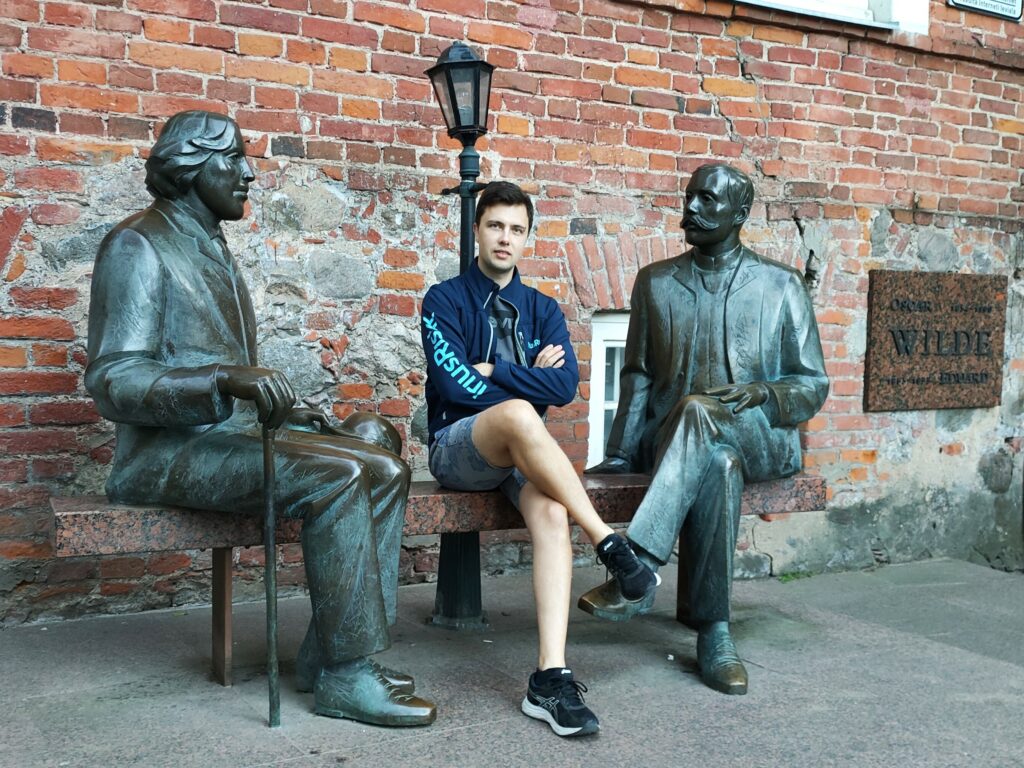
- Statue of Father and Son: a creepy and disproportionate statue in which the son has been built with the same height of the father but with infant proportions.
Other attractions
- Rüütli street: very emblematic street which marks in the floor where the old buildings used to sit.
- Toomemäe Park.
- Neighbourhood of Supilinn: a good neighbourhood to just wander. It has streets with names of ingredients of food, cats walking in the evenings and wooden pinturesque houses.
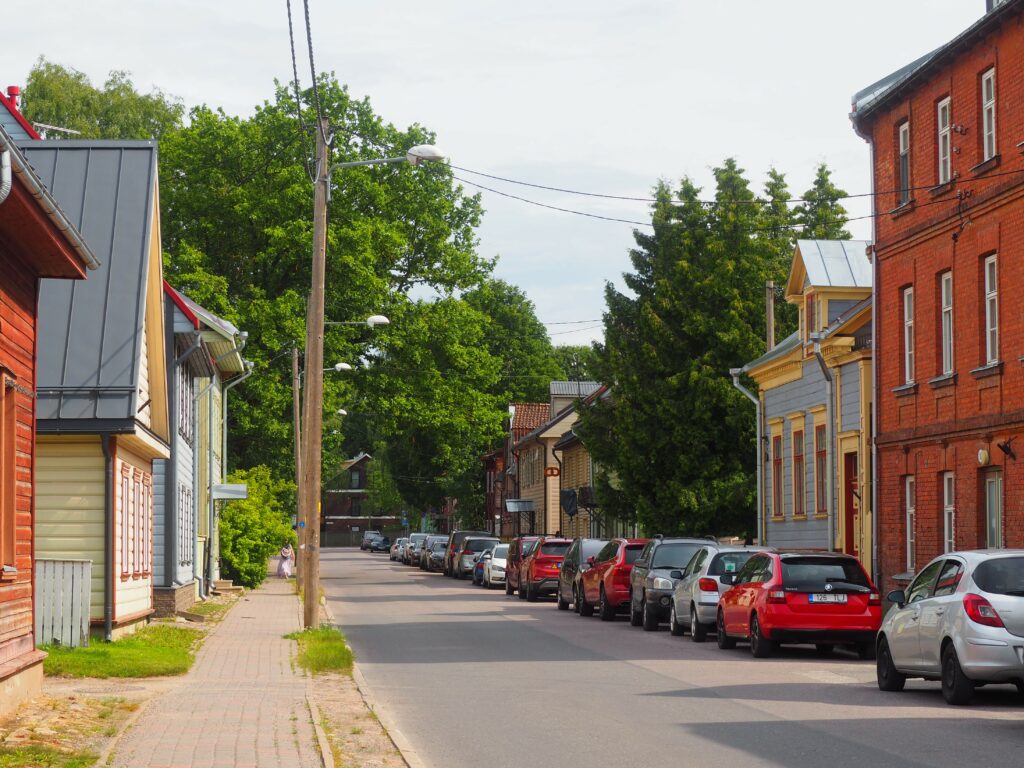
- KGB Prison Cells Museum: former prison cells converted into a museum. It talks about WWII and russian deportations of Estonian citizens to Siberia after the war.
To eat
- Werner Café: the perfect place to taste traditional (and not that traditional) deserts.
- Gunpowder Cellar of Tartu: great place for dinner, with traditional meals and university students partying.
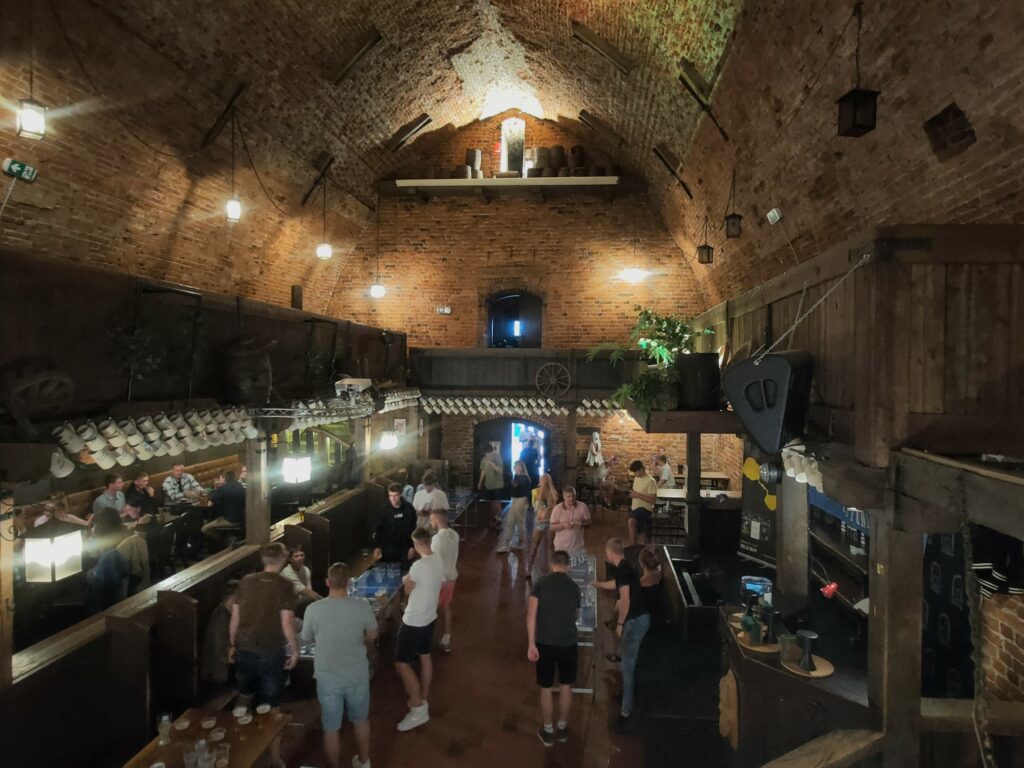
Soomaa National Park
Soomaa National Park is known as the Wildreness Capital of Estonia. It is a site of protected wetlands since 1997. The Park is also known for its great flood or the so-called fifth season, when the water from melted snow or heavy rains floods all the lower forests meadows and roads.
Apparently, the type of tourism that predominated in the Park was international pre-Covid, while post-Covid they are used to local visitors. These local visitors tend to prefer winter activities (mainly based on ice and snow activities) rather than summer, so it is generally peacefull when it is hot.
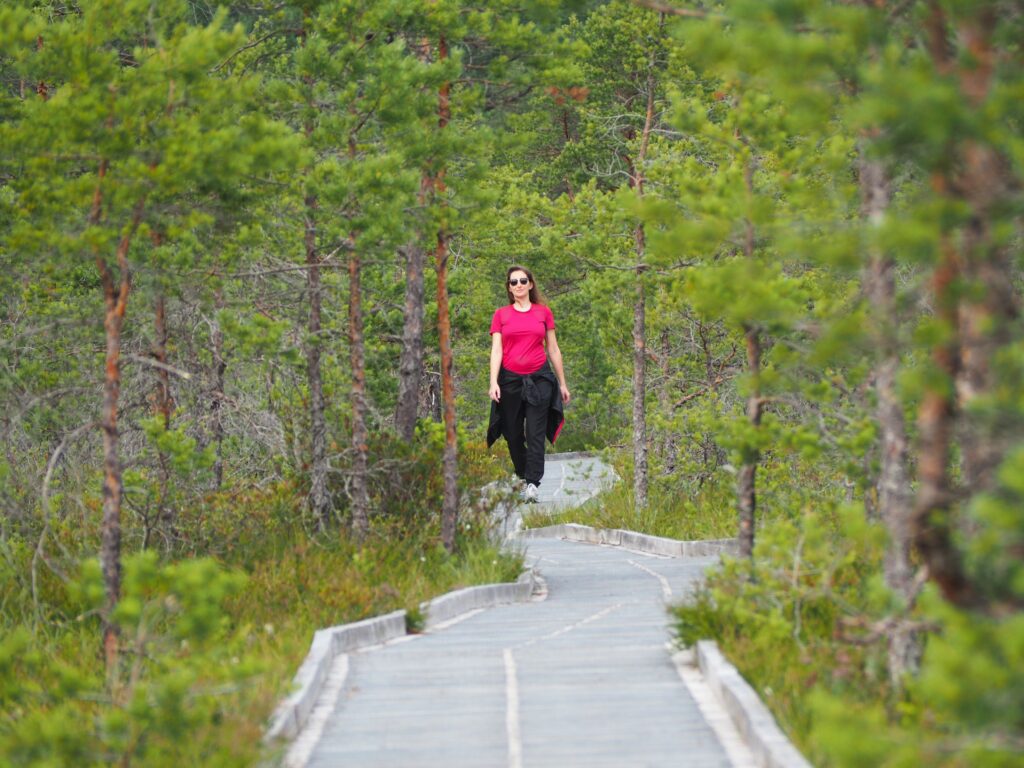
The main activities to do in the Park are:
- Canoeing through the river: there are several routes that you can do depending on how many kilometers you want to row, starting from 6km. The cost (as of summer 2023) was 25€ per person. There are different companies that offer this activity and you’ll need to book in advance. You can expect to encounter a lot of flies and a very beautiful landscape. I thought of Pocahontas during the experience.
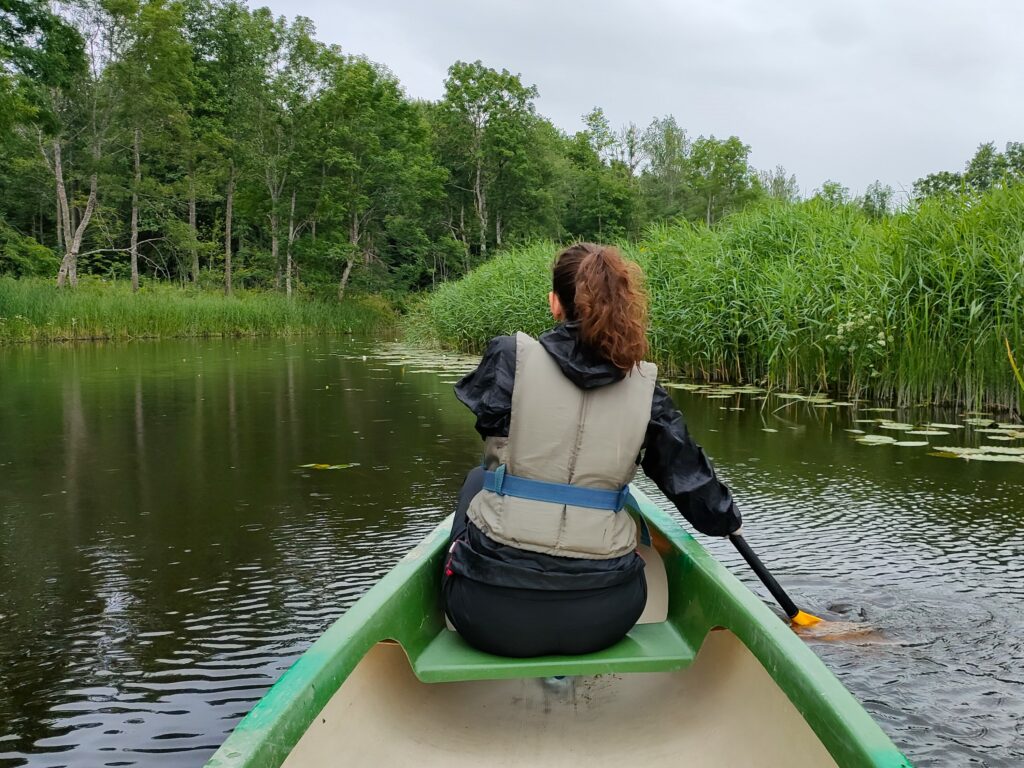
- Hiking in Riisa Opperada. 5 easy kilometers through the wetland. A part of the route is adapted to wheelchairs. The landscape is quite varied, with forests, lakes and meadows, and with a great range of colours. In this case, the Disney movie I was remembering was Snow White.
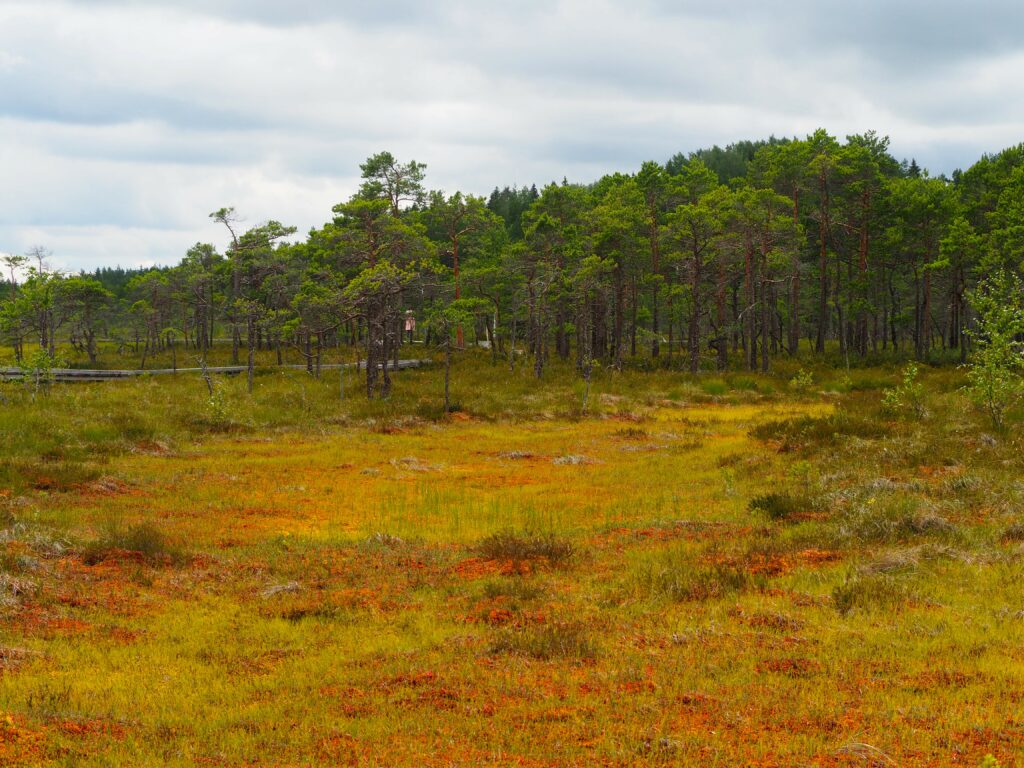
- Hiking in Riisa Ingatsi. This one can be done from the parking or from the canoeing. It is 3km long and quite similar to Riisa Opperada, so if you need to chose, I would recommend the other one.
- Visit the Visitors Reception Center. They will provide you information of activities to do in the Park, as well as on the culture and traditions of the area.
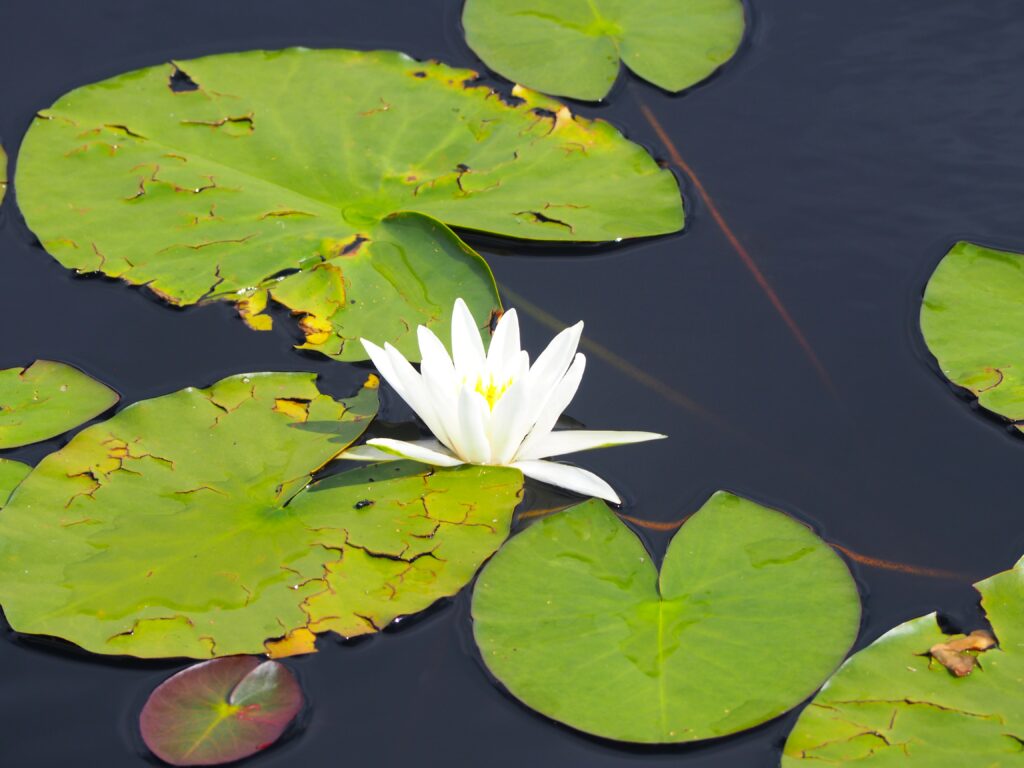
Jägala waterfall
It is the largest waterfall in Estonia and very close to Tallinn. I would however say that Estonia is not famous for its waterfalls, so ‘largest one’ in this case means 8m high. I would personally only visit if it is on the road to some other activity you want to do.
Rummu Quarry
Former prison that has currently been converted into an aquapark for the whole family.
Saaremaa
It is the biggest island in Estonia and offers a range of activities for a day or several ones. For example, the charming city of Kuressaare, cliffs, lighthouses, windmills, forests or even meteorite craters.
If you visit, be sure to taste Pöide, the local craft beer.
Lahemaa National Park
This is the first National Park established in the USSR and the most visited one in Estonia, mainly due to its proximity to the capital Tallinn (70km). There are several easy hiking routes to visit its wetlands. Apparently it can be quite similar to Soomaa.
Helsinki, Finland
The capital of Finland, Helsinki, has been scoring high amongst the most liveable cities in the world. It’s no wonder why. With its few cars, so much pedestrian streets or bike lanes, the city is peacefull, quiet and generally uncontaminated.
Helsinki is very well connected with Tallinn by ferry, making a visit to Finland’s capital a feasible activity in what to do in Estonia.
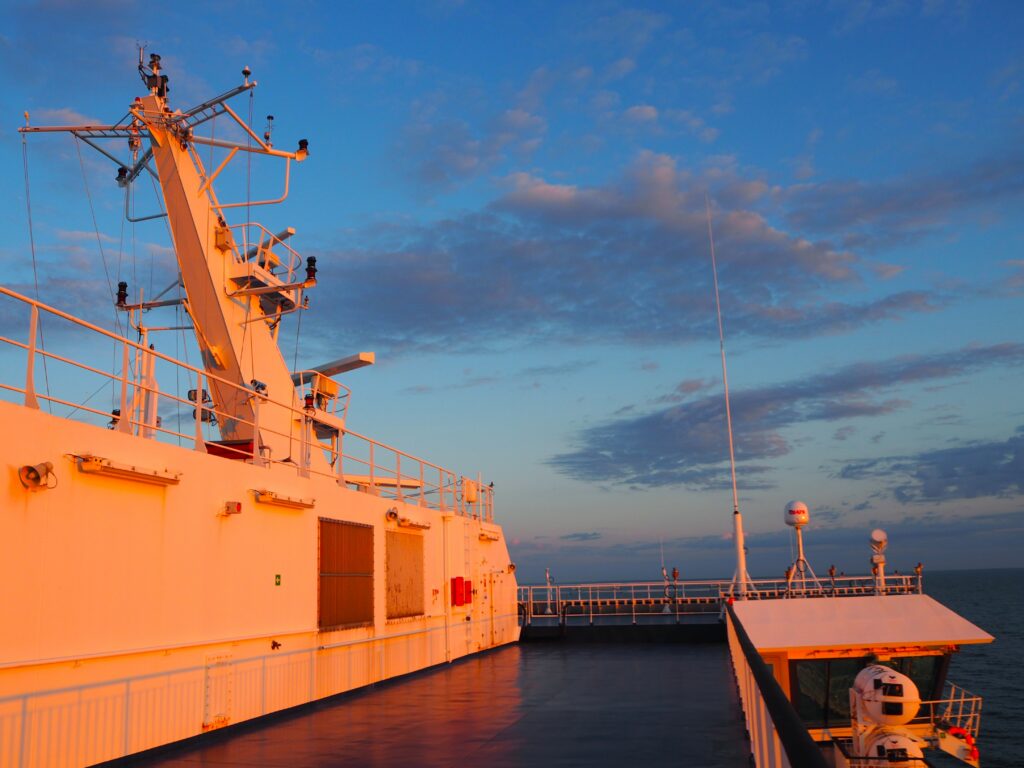
As a tourist, you can easily rent a bike or an electric scooter or just use the public transport to move around. The App HSL allows you to buy bus, tram or ferries tickets.
Main attractions
These are the main attractions you can visit:
- Tuomiokirkko (the Cathedral of Helsinki), located in the Senate Square.
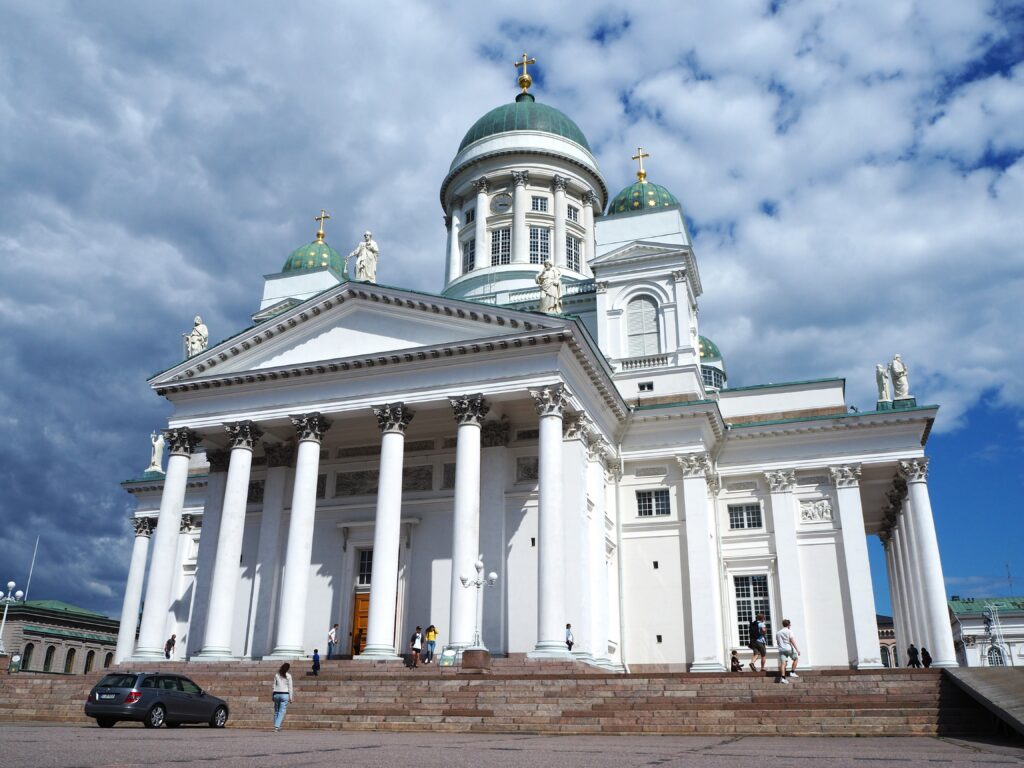
- Suomenlinna sea fortress: it is a UNESCO World Heritage Site and accessible by ferry.
- Old market, next to the port. My favourite part was inside the old building. It is small, with only two aisles. It has mostly gourmet food and among it, mostly smoked fish that looks so delicious. Keep in mind that it is closed on Sundays.
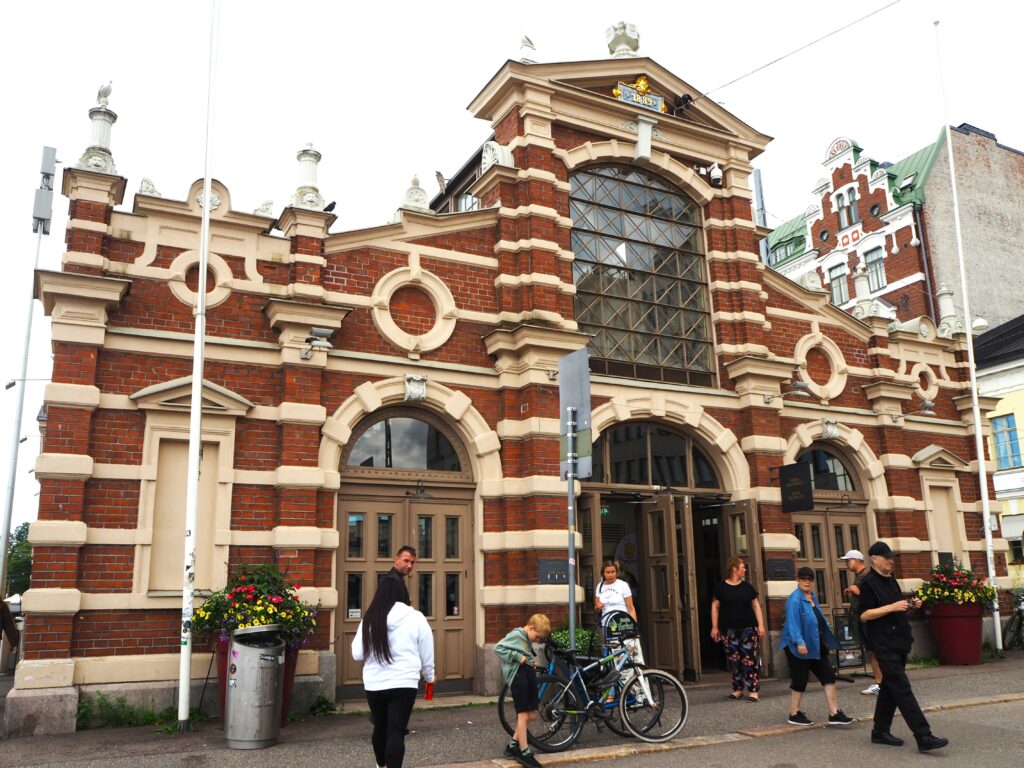
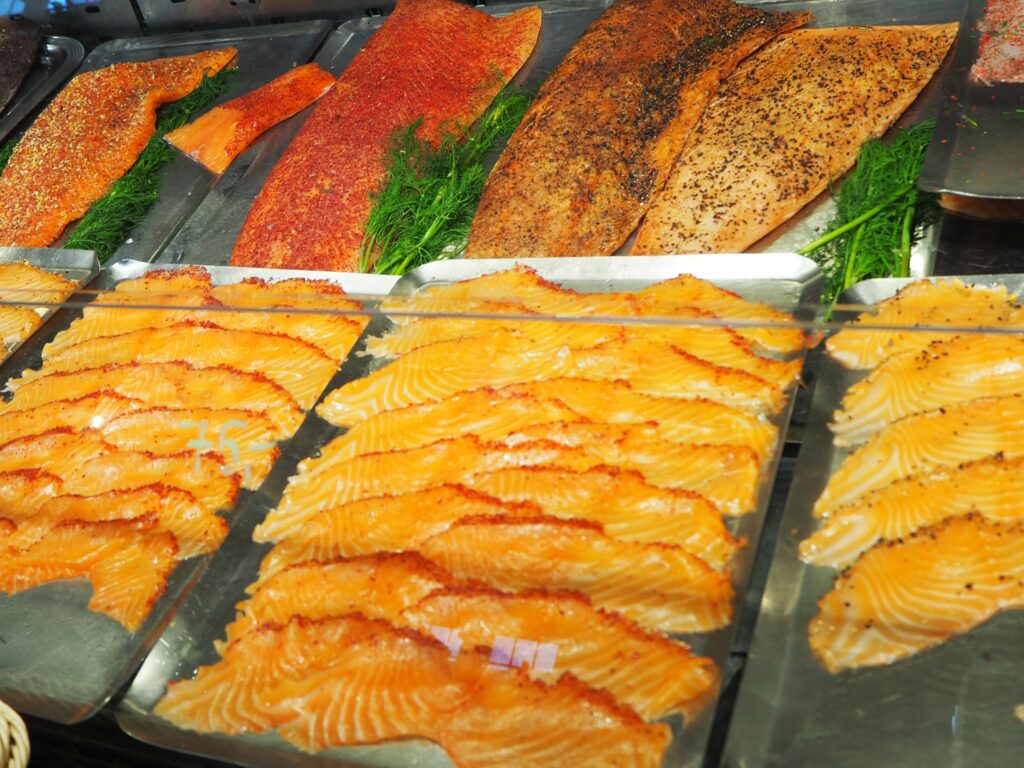
- Uspenski church, which is the biggest European orthodox cathedral. High in the hill, it is a very photogenic place.
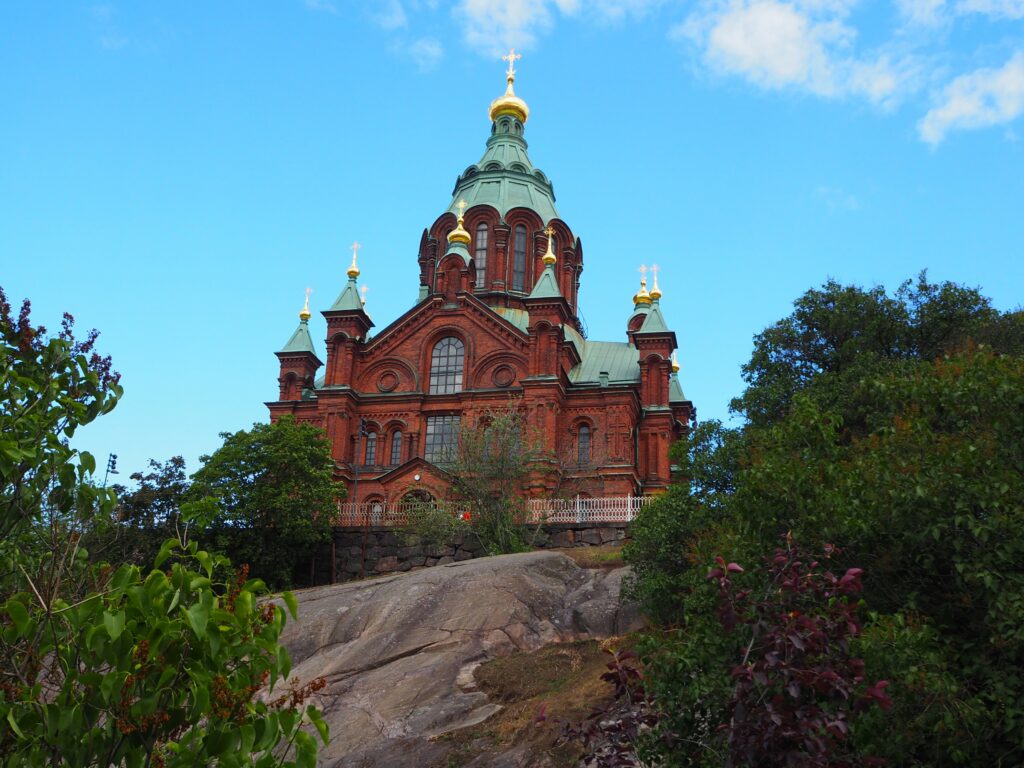
- Toloviken lake.
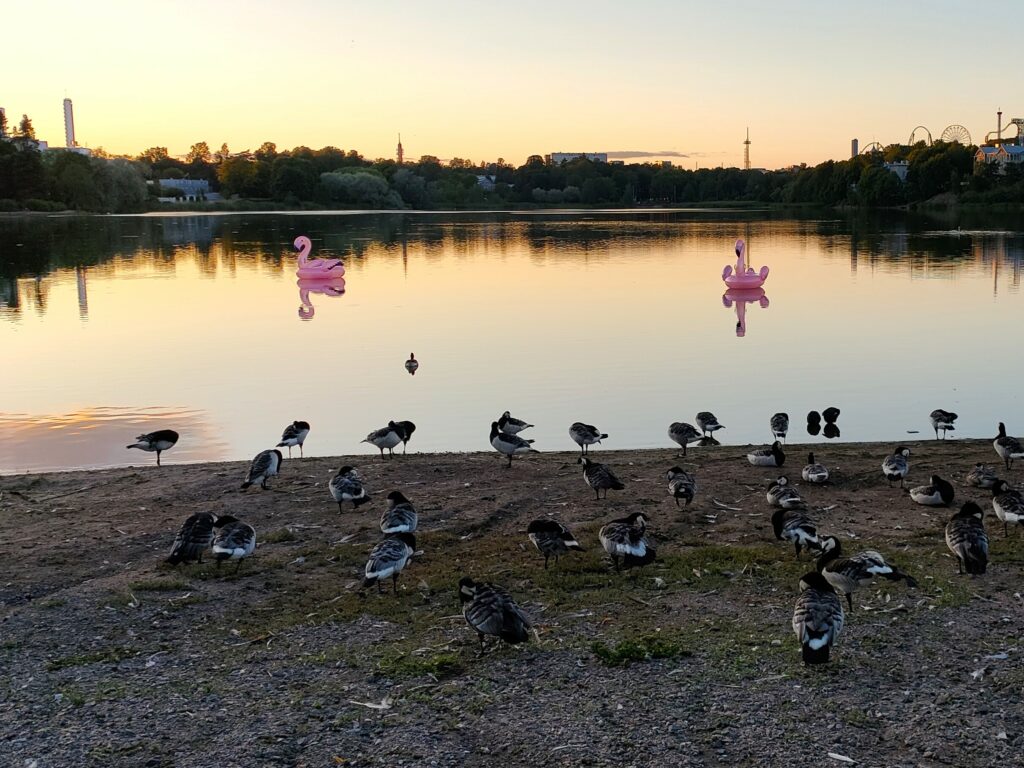
- Temppeliankon Kirkko, a church carved in stone.
- Esplanadi Park for a relaxing walk.
- Visit public saunas and pools, such as Lôyly or Allas Sea Pool (next to the sea).
- Enjoy bars and terraces! Or even spike it up with a ride with Spärakoff, a tram-pub that moves around the city.
The library (Oodi)
As an unorthodox recommendation, I would encourage you to visit the library (Oodi), which is an amazing construction built in 2018 with lots of services for the population. Besides books, you can also find computer or board games (including a chess area), meeting rooms, sound studios, instruments to rent, 3D printers or sewing machines. There are also plenty of cafés and restaurants (including the cheapest we found in the city!).
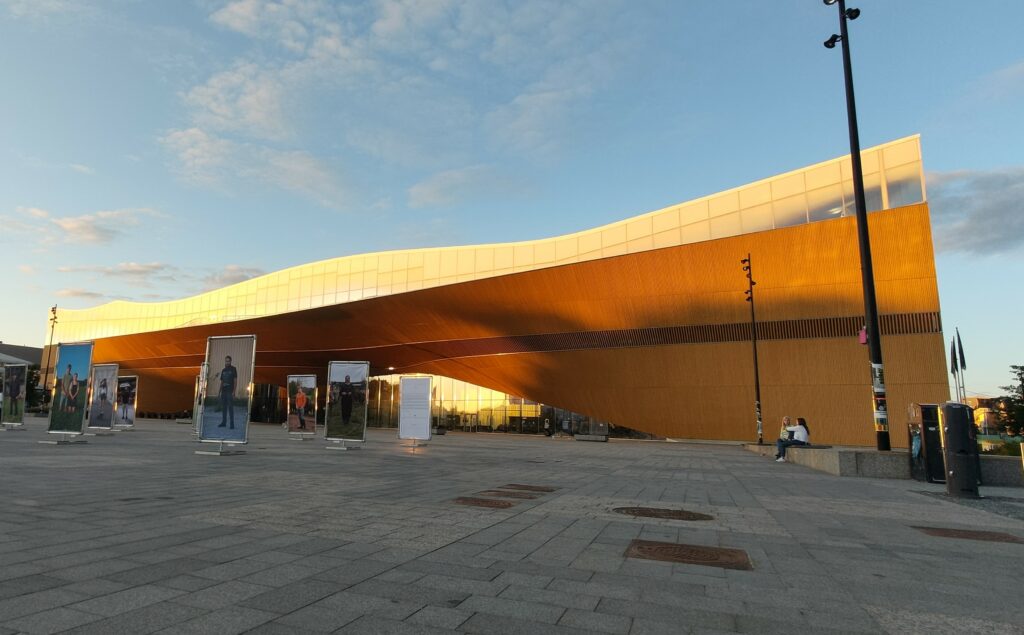
Was this post useful for you? Please let me know and feel free to ask any question in the comments section! You can also support my work and Buy Me A Coffe. I will be immensely happy 🙂
